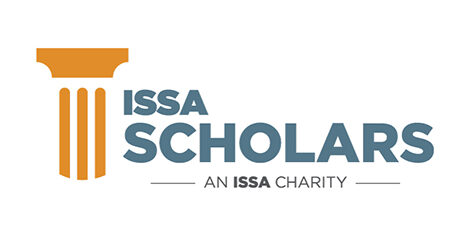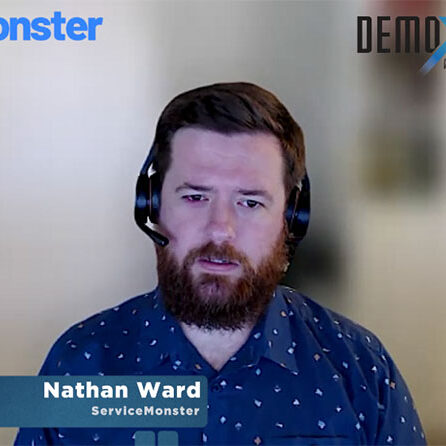Trends in Technology

by Jeff Cross | executive editor
Technology. It’s everywhere you look. You can’t escape it. And, of course, you probably don’t want to.
You use it in virtually every aspect of your life, from waking up in the morning to when you retire at night. You use it to look up words you don’t know. You use it to find your way to a place you aren’t familiar with. You use it… for everything.
Technology is also used in the cleaning and restoration industries. Sometimes it is taken for granted, yet the value can’t be ignored. Just put aside, foroneday, the technology you typically use, and you will quickly see how badly you need it and how lost you feel without it.
The concept of technology
Especially for those of you veterans who work primarily in the disaster restoration field, you might recall the day when you would go to a water damage job, disengage the carpet from both ends of the room, put the snout of the airmover underneath, and float the carpet. You placed a dehumidifier or two, and you checked back occasionally. You moved things around, and because of your experience, you got it dry. There might have been some guessing going on during the process.
While the theory and practicality ofhow things dryhasn’t changed, how we understand it and what affects ithaschanged. Technology has improved the process and made restoration work a true science. There’s no guessing any longer, both in the field and at the office.
“Now more than ever, the technology you use to run your cleaning or restoration company matters,” according to Garret Gray, CEO of Next Gear Solutions, a technology company that provides multiple software platforms for the industry. “Customer expectations for on-demand and real-time information is fast growing, as other industries have moved from paper-based management tools to digital ones, and this has created new expectations that are flowing into our industry. Cleaners and restorers are experiencing this shift.”
This is true across many aspects of business management, from managing a client database to scheduling jobs to collecting data for insurance payment purposes.
There is real need for technology besides convenience, according to Brandon Burton, vice president of technical application for Next Gear Solutions.
“The pressure for efficiency, accuracy, and integrity are at an all-time high in the restoration market,” Burton says. “At the same time, several drivers are elevating annual loss severity globally. Weather is becoming more and more variable, building materials are becoming more unstable in the presence of water damage, green initiatives are slowing the ability for natural drying, and consumers are becoming more and more acutely sensitive to indoor air quality issues.
“The industry is primed for the broad adoption of digital and systematized data collection and reporting.”
Because of this, and other reasons, companies are working diligently to put together technology, especially in the form of software, to continue advancing efficiency and productivity.
John Ormsby, president of the Dri-Eaz and ProRestore product lines of Legend Brands, sees more technology advancements on the horizon.
“We are adapting to meet the needs of the highly-specialized restoration industry,” Ormsby says. “The next logical steps in that evolution will be leveraging technology to completely change the way professional contractors manage their work. We have partnered with Next Gear Solutions for exactly that end — to begin solving the need for more efficient, complete, and timely information to ensure restorers have the data they need to make accurate project and business decisions.”
What’s available?
Cleanfax extended an open invitation to providers of various types of cleaning and restoration technology, to share what they bring to the table to help business owners and entrepreneurs to succeed.
It’s a competitive marketplace, and technology can give you an edge. That is, if you use it.
Read on to check out a sampling of what you can take advantage of as you continue to build your company and, of course, continue to improve productivity and increase profitability.
Using equipment
The guessing game of equipment usage is history. This applies to aspects of the cleaning and restoration industries, and one example is ozone.
“In the past, technicians didn’t know how much ozone was needed and how long the treatment should take,” according to Louis Adams, the national sales manager with NuvoAire. “The correct concentration and contact time are critical for successful deodorization and sanitization. Because ozone is an oxidizer, treatments should not run longer than eight hours before purging the area.”
To assist with this, his company offers the “Ozone Calc” app in which a technician can enter parameters and get the “grams per hour” and treatment duration. It’s free and, once downloaded from an app store, there is a link back to the Nuvoaire website for technical support. “We offer support such as ‘how to turn a house into an ozone chamber,’ and we also offer products such as warning signs,” Adams says.
Tracking equipment
Invisi-Tag is a tech company that provides tracking services. The company uses radio-frequency identification (RFID) technology to keep track of any asset type, such as cleaning or restoration equipment, in the field.
One huge benefit Invisi-Tag and its app brings to its clients is eliminating human error. With an electronic tracking system in place, paperwork is reduced and productivity is increased, along with reduced loss of equipment that happens in the field.
“Our clients want to see all of their equipment from one place,” according to Aminur Rahman, the senior engineer of the electrical engineering department with Invisi-Tag. With a GPS map overview feature, users can see where their equipment is in real time from all open and active job sites.
Lost equipment is a real challenge for some companies, especially in restoration. “Given the nature of restoration companies, contractors have so much going on, and sometimes they might occasionally forget to pick up equipment from job sites,” Rahman added. “Invisi-Tag’s past-due alert sends an email to the contractor of all of their open/ active jobs that still have equipment remaining. The email is sent the very next morning at 4 a.m., so they are notified first thing.”
In addition, Invisi-Tag has added the ability to scan QR codes directly into the app. “This allows the user to drop off equipment to job sites and still capture the GPS location of their device, which will show up in their cloud account,” Rahman says.
Invisi-Tag currently integrates with job management software such as PSA Restoration Contractor from CanAm Systems, and soon will integrate with the Job-Dox platform.
Job management
In recent years, there has been a significant shift in the cleaning and restoration industries as it relates to software, and platforms that help owners and managers handle day-to-day operations have replaced the paper-and-pen concept.
“The focus has been towards workflow automation, compliance metrics, and the mobilization of field technicians through apps,” according to Ryan Pritchard, the sales manager at CanAm Systems, the company that developed PSA Restoration Contractor. “As we shift away from the information age and reviewing historical data, we move towards the next era in technology: the ‘Experience Age.'”
As Pritchard explains, the expectation of the Experience Age is that information is to be experienced in real time and shared seamlessly with all parties involved.
“One of the biggest issues still facing contractors today is their inability to accurately capture job costs and understand profitability,” he adds. “When it comes to understanding ‘work in progress,’ or WIP, many businesses are forced to do manual calculations to identify which resources are tied up in expenses and the anticipated revenue associated. This leaves contractors driving blind with only what they have in the bank to determine where things stand.”
Enter PSA Restoration Contractor, which Pritchard says takes a different approach to all other job management systems and focuses on the numbers.
“PSA is a fully integrated enterprise-resource planning solution that provides job tracking with accurate costing and WIP automation,” he says. “This solution provides contractors with the ability to track costs in real time and provide a clearer picture into the hands of the people doing the work.”
In addition, Pritchard says his company has seen significant consolidation of systems within the industry to standardize information and streamline data entry.
“Integrated solutions play a significant role in tying the entire claim experience between contractors and insurance carriers together. Contractors want a solution that eliminates duplication and reduces back-office administration,” Pritchard said.
Next Gear Solutions offers DASH, a restoration project management tool. Next Gear has worked in the restoration space since 2009 and believes technology should deliver workflow automation, mobility, and streamlined capture of real data from the actions of employees in the field.
Scott Severe, chief strategy officer with Next Gear Solutions, explains, “With DASH, we’ve learned to serve an industry that responds in extreme conditions. Technology must be as mobile and reliable as the restoration contractor themselves.” Severe added a strong word of advice to contractors, saying, “Any technology you rely on in this industry must be there for you 24/7, with reliable mobile access and support, in the same way you are for your property owners.”
Mobility is only part of the puzzle. “Actionable data is what we all crave. And when you can get actionable data from just capturing what the tech in the field would be doing anyway, you can use that data to run your business with confidence,” Severe added. “The key is to have solutions that incorporate mobile apps that are easy to use and understand, so the employee has no roadblocks — one checkbox to mark a task done, which provides you with date, time, person, equipment, and eventually even location stamps. And, it must capture the data that keeps you compliant with the IICRC S500 standard, with minimal effort from your techs.”
Obtaining reviews
As a business owner, you understand and appreciate the value that online reviews bring to your company — and how they can attract new customers. Reviews have transformed from a business-building tool that business owners would like to have to one they must have.
“Reviews provide ‘social proof’ that a company is trustworthy,” according to Lars Kristensen, the founder of NiceJob, an online platform that enables companies to obtain and publish reviews from clients. “A rather shocking 88 percent of customers trust reviews as much as a personal recommendation from a friend.”
In today’s electronic age, reviews are really the ultimate referral, Kristensen explains. “Instead of your customer recommending you to one friend, when they write an online review, they are really recommending you to thousands of other people.”
Using a tool such as NiceJob enables companies to automate their review marketing process. “There’s really three parts to review marketing: Asking for the reviews, collecting and analyzing your reviews, and sharing your reviews,” Kristensen explains. “Good review marketing software will automate all three steps, so that little to no extra work is needed to be done by you.”
Add to that the fact that with some online review platforms, such as NiceJob, connect to your invoicing and customer management system, the process can be triggered automatically whenever a job is completed.
Another company with cutting-edge review acquisition software is 33 Mile Radius, which produces the Acquirly review-generation platform app.
“This lets contractors ask customers for reviews on service for Google, Facebook, and the Better Business Bureau,” Jeff Rooks, the content editor for 33 Mile Radius Content Editor, explains. “Customers just enter their email address and phone number into the app; then the app sends them an email and text asking for a review of the contractor’s service. Acquirly even sends reminder messages.”
This easy-to-use app has helped contractors overcome issues with online reviews. “Most customers will only leave a review if they are dissatisfied unless they are specifically asked,” according to Rooks. “And contractors are often inconsistent in asking. Acquirly solves both of those issues, making it easy for contractors to ask for and customers to leave reviews.”
Scheduling jobs
Disappearing are the days when you made a phone call to get a service appointment. Now, many in-home service companies, such as those that offer carpet cleaning and related services, offer online scheduling.
“Technology is supposed to create efficiencies for service companies,” according to Steve Mastio, the creator of the FittleBug real-time scheduling program. “But if it can benefit both ends of the value chain, as Martha Stewart says, that’s a good thing.”
FittleBug is one of those tools. The provider can share, at any time and any day, important information on anything a consumer might want to know about securing their services. And the consumer can secure this information at their convenience and complete the task of securing those services on their time based on the schedule the provider makes available.
Mastio compares the cleaning industry to the airline industry when considering booking convenience. “How would you like it if, after perusing through all the airlines’ options of flights, times, and costs and entering your personal information, you were then told that someone would get back to you instead of allowing you to complete the task as desired?” he asks. “Unfortunately, many software options today do just that. Nothing is complete because it wasn’t really based on real-time, down-to-the-minute availability of the service provider. These are referred to as web forms, or just forms.”
Software, such as the type FittleBug offers, can share information, either through an application programming interface (API) or other sources. Mastio explains, “FittleBug communicates this way with ServiceMonster, saving tons of administrative time and effort. Even a simple link through Google Calendars can save lots of time with other programs that don’t have or share their API.”
Communications
How we communicate using technology has changed drastically over the years, and for businesses, this is important to appreciate and embrace.
“Technology should enable a restoration company to meet the needs of their customers before their customers even realize to ask,” believes Joe Sample, president and co-founder of VoiceSifter, a company that uses technology to connect service providers with customers.
How does VoiceSifter do this? The online platform opens a dialogue between the customer and your business during the job, allowing you to address concerns in real time rather than finding them on your Yelp or Facebook pages. “Our text message platform sends branded messages to customers, featuring your logo along with the desired message,” Sample says. “VoiceSifter also provides the ability for your company to send follow-up surveys after a job is completed, enabling you to discover the areas of strength or weakness.”
Customers have plenty of options for communicating and sharing their thoughts after a job is complete but not many options during the job. Sample adds, “By enhancing existing customer touch-points with a more modern approach, such as text messaging, you have the ability to increase customer satisfaction while decreasing cost to serve them.”
Client management
Customer relationship management (CRM) is a form of technology for managing all of a company’s relationships and interactions with customers and potential customers.
That’s an important business-building strategy in today’s world of technology. “A reliable CRM is essential for the modern-day service professional. It gives you the ability to manage your client list in a single repository and then use it as a jumping-off point to carry out your marketing, send out follow-ups, manage customer history, and much more,” according to Joe Kowalski, the CEO and chief architect for ServiceMonster. “We built this platform for the unique needs of service providers, which means it includes features that are indispensable to industry professionals, such as scheduling, routing, analytics dashboards, and marketing.”
Platforms such as these enable company management to keep their technicians informed as well. Says Kowalski, notifying technicians of schedule changes and customers of upcoming appointments is key to productivity. He says. “It also automates and streamlines your routine tasks, freeing you up to grow your business, understand where your numbers are, hire more employees, and even position your company for successful sale down the road.”
There are many CRMs in the software universe, but Next Gear Solutions feels that they have something special in their restoration-specific Luxor CRM. “In the restoration industry, the majority of the selling happens with influencers and referrers of business, not consumers. And the industry needed a CRM that was built to fit this purpose,” recalls Lukas Szczurowski, founder of Luxor CRM, now a Next Gear Solutions company. “Luxor CRM’s proprietary algorithm coupled with a restorer’s job data classifies their relationships and tells them where they need to invest their time and money to maximize their return.”
Luxor CRM seeks to take restoration sales teams to a higher level of relationship management and get them out of the business of just working a three to four week rotating route and stopping by to drop off donuts. “The sophistication of the Luxor CRM finally allowed us to track how a relationship was progressing, how referral patterns may be changing. It enabled people we used to call marketers to become Sales Professionals,” Szczurowski explains.
Embrace cleaning and restoration technology
Technology, such as with the various software platforms on the market today, is a vital and integral component necessary to grow cleaning and restoration companies.
Don’t get left behind. Keep up with what’s available.
Jeff Cross is the executive editor of Cleanfax. He can be reached via email at [email protected].












